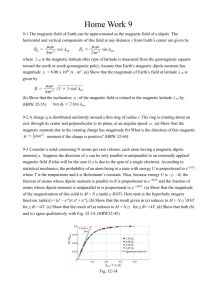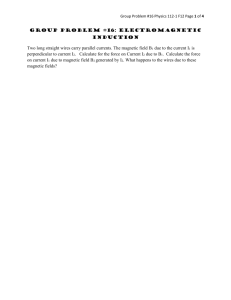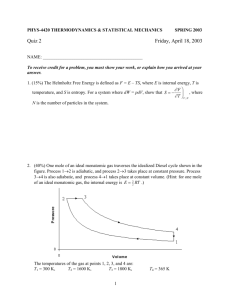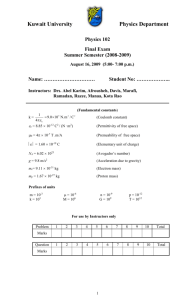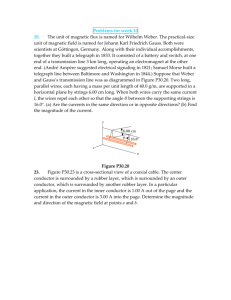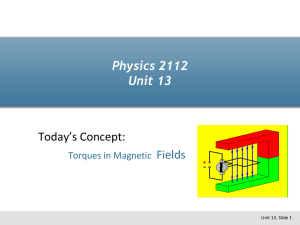Home Work Problem Set 11
advertisement
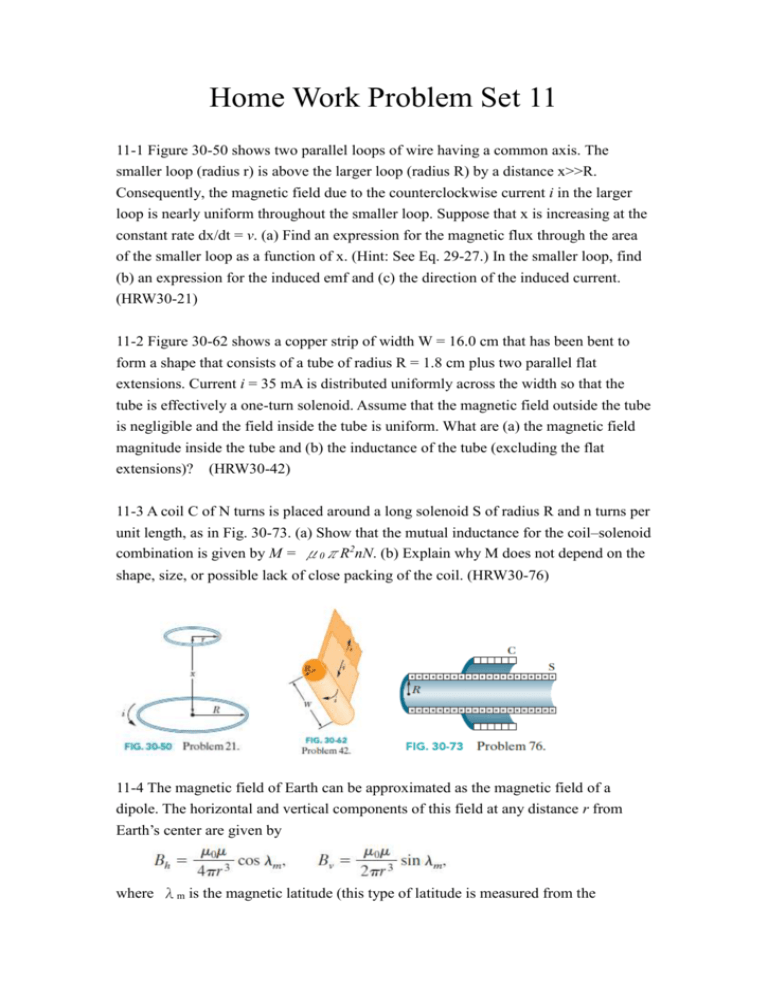
Home Work Problem Set 11 11-1 Figure 30-50 shows two parallel loops of wire having a common axis. The smaller loop (radius r) is above the larger loop (radius R) by a distance x>>R. Consequently, the magnetic field due to the counterclockwise current i in the larger loop is nearly uniform throughout the smaller loop. Suppose that x is increasing at the constant rate dx/dt = v. (a) Find an expression for the magnetic flux through the area of the smaller loop as a function of x. (Hint: See Eq. 29-27.) In the smaller loop, find (b) an expression for the induced emf and (c) the direction of the induced current. (HRW30-21) 11-2 Figure 30-62 shows a copper strip of width W = 16.0 cm that has been bent to form a shape that consists of a tube of radius R = 1.8 cm plus two parallel flat extensions. Current i = 35 mA is distributed uniformly across the width so that the tube is effectively a one-turn solenoid. Assume that the magnetic field outside the tube is negligible and the field inside the tube is uniform. What are (a) the magnetic field magnitude inside the tube and (b) the inductance of the tube (excluding the flat extensions)? (HRW30-42) 11-3 A coil C of N turns is placed around a long solenoid S of radius R and n turns per unit length, as in Fig. 30-73. (a) Show that the mutual inductance for the coil–solenoid combination is given by M = μ0πR2nN. (b) Explain why M does not depend on the shape, size, or possible lack of close packing of the coil. (HRW30-76) 11-4 The magnetic field of Earth can be approximated as the magnetic field of a dipole. The horizontal and vertical components of this field at any distance r from Earth’s center are given by where λm is the magnetic latitude (this type of latitude is measured from the geomagnetic equator toward the north or south geomagnetic pole). Assume that Earth’s magnetic dipole moment has magnitude μ = 8.00 × 1022 A‧m2. (a) Show that the magnitude of Earth’s field at latitudeλm is given by (b) Show that the inclination φi of the magnetic field is related to the magnetic latitudeλm by . (HRW 32-55) 11-5 A charge q is distributed uniformly around a thin ring of radius r. The ring is rotating about an axis through its center and perpendicular to its plane, at an angular speed ω. (a) Show that the magnetic moment due to the rotating charge has magnitude (b) What is the direction of this magnetic moment if the charge is positive? (HRW 32-60) 11-6 Consider a solid containing N atoms per unit volume, each atom having a magnetic dipole momentμ. Suppose the direction ofμcan be only parallel or antiparallel to an externally applied magnetic field B (this will be the case ifμis due to the spin of a single electron). According to statistical mechanics, the probability of an atom being in a state with energy U is proportional to e-U/kT, where T is the temperature and k is Boltzmann’s constant. Thus, because energy U is -μ‧B, the fraction of atoms whose dipole moment is parallel to B is proportional to eμB/kT and the fraction of atoms whose dipole moment is antiparallel to is proportional to e-μB/kT. (a) Show that the magnitude of the magnetization of this solid is M = Nμtanh(μB/kT). Here tanh is the hyperbolic tangent function: tanh(x) = (ex – e-x)/( ex + e-x). (b) Show that the result given in (a) reduces to M = Nμ2B/kT forμB<<kT. (c) Show that the result of (a) reduces to M = Nμ forμB>>kT. (d) Show that both (b) and (c) agree qualitatively with Fig. 32-14. (HRW32-45) Fig. 32-14

